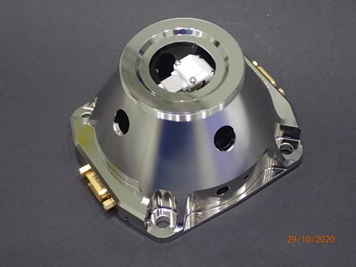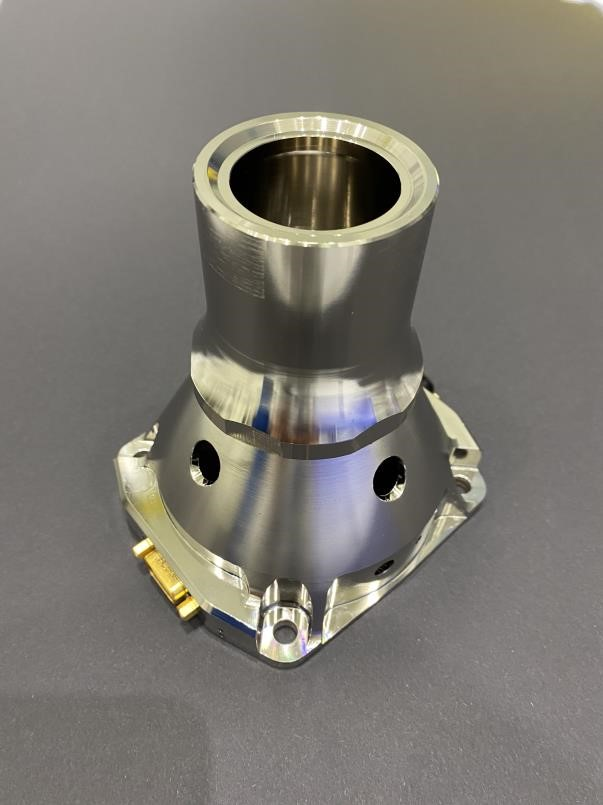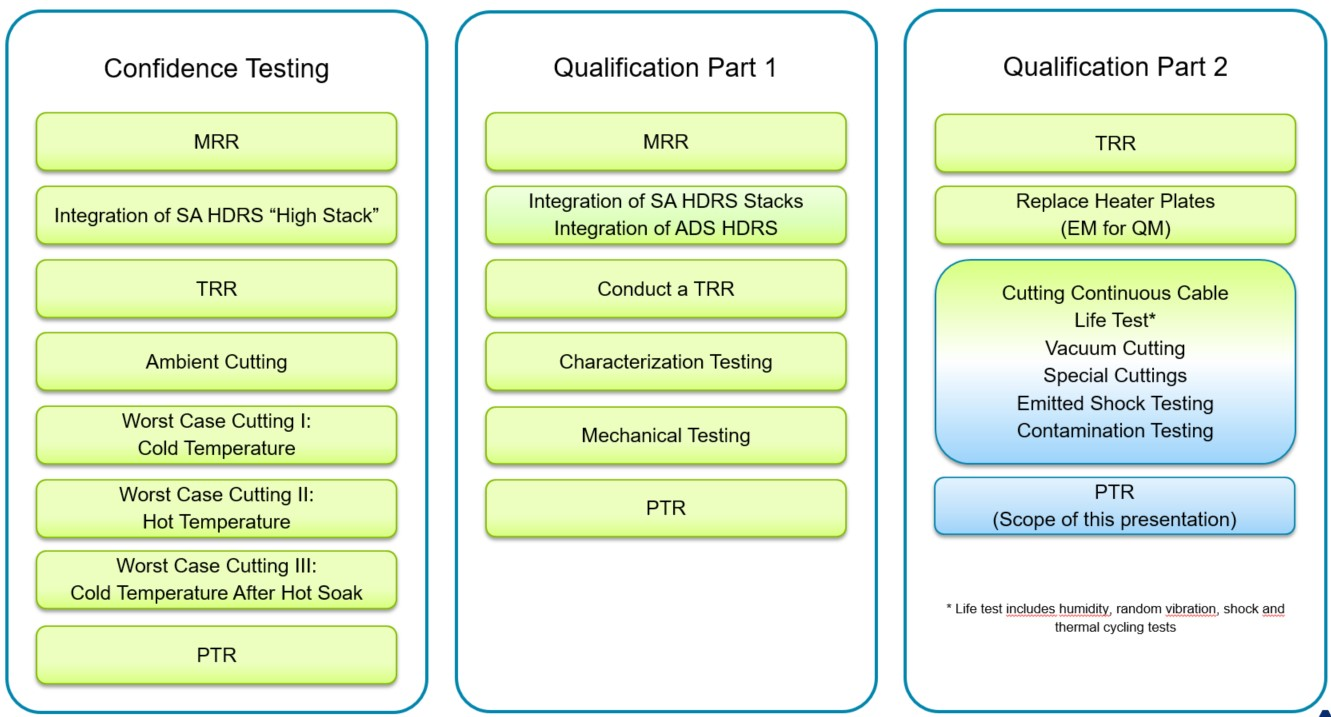PAGE CONTENTS
Objectives


The first phase of the development of the NELS hold down and release system covered the definition of requirements, technology investigation, and breadboard testing and concept design. As a result, a trade-off was made between the concept designs and decisions were made for the concept used for the Engineering Model.
In this next phase of the project, Airbus DS NL qualified the design.
Challenges
For testing the “test as you fly” principle was adopted, which means Airbus DS NL followed the same sequence of steps as would be seen during an actual system integration, launch and activation in space flow.
The main challenges that had to be resolved arose when using elements from the NELS EM design and from EM GSE to build up flight representative items and test equipment to meet requirements under qualification level test conditions. To ensure proper functioning under these entire worst-case environmental test conditions, Airbus DS NL had to augment the EM test equipment, change the design and supply of the Heater Plates, and had to make small but important modifications to the parts of the mechanical design of NELS. Airbus DS NL was able to separate the structural (mechanical) elements of the test from the functional (cutting) elements, therewith performing the qualification in two separate parts. That allowed keeping the planning manageable.
During execution of the test campaign, Airbus DS NL found that the control release voltage range had to be limited to 20V due to limitations of the heater plate design. As it turned out this coincided with the release of the ECSS standard that specifies the same value. This finding was supported by information from Space Craft designers, which confirmed there is no immediate future need for higher control voltages than 20V.
Another factor was that a possible additional application of the NELS mechanism (for hold down and release of Antenna Booms) is no longer pursued by Airbus DS NL, as competitors for this equipment tend to use their own release mechanisms. Hence, the qualification for the NELS configuration variant to support that application – though started – was halted, although there is still a proposal running for such an application.
Looking at the test flow (see below figure) the confidence tests were done to confirm that the newly designed and procured heater plates were able to cut under all conditions.
Throughout the qualification campaign we made use of 3 QM grade NELS configurations, a low- and a high NELS stack intended to qualify the design for the envelope of Solar Array applications (2 to 5 panels), and a stack that was intended for Antenna Boom application. Over time we exchanged parts that needed to be modified, used all 3 NELS configurations and repeated tests if representativeness of previous test configurations was questioned.
Below figure depicts the executed test flow.

System Architecture
Increased demands from the S/C applications, including satisfying higher margins of safety, and a larger temperature range, require a re-design of the existing ARA Mk3 solar array design.
Therefore, the NELS development had the approach to extend the pretension to 15kN with a design that that has a high level of similarity with the existing ARA mk3 design, and to increase the temperature envelope.
Plan
In summary, the NELS project covered the following steps:
– Build up the Ground Support Equipment, both mechanical and electrical suitable for the qualification tests
– Build-up 3 NELS configurations
– NELS qualification test, comprising of:
– Restraint cable proof loading. Restraint cables are proof-loaded at a level higher than the actual load in order to remove setting effects.
– Restraint cable characterization of ultimate load in ambient pressure and room temperatures thermal conditions. Tests are performed on 2-panel and 5-panel Solar Array restraint cables and Antenna Deployment System (ADS) configuration restraint cable.
– Restraint cable shelf life test. Determine ultimate load as function of shelf life time.
– Long-term storage test of pre-tensioned NELS stack indicating pretension reduction over times of pre-tensioned 5 panel restaint cable (190.5 mm).
– Thermal knife moving torque and friction are measured in vacuum in hot and cold conditions.
– The mass of all parts and sub-assemblies is measured. o Insulation and conductivity tests are performed on the NELS system.
– The NELS system is mechanically characterized by the following tests: Stiffness test of bracket and conocal bracket and cup-interface adapter.including thermal washers
– Canting test
– Sliding test
– Snubber preload test
– Random Vibration test
– Shock test (emitted shock)
– Shock sensitivity test (absorbed shock)
– Life testing ‘test as you fly’ approach.
– Repeated cable installation simulation the ground environment. o Humidity test. o 20 TVAC cycles simulation Geostationary orbiting. o Cutting and release in vacuum at hot and cold conditions.
– Several cutting tests were performed to qualify different cutting conditions:
– Cutting with thermal gradient over the structure
– Cutting in ambient pressure Cutting in vacuum at room, hot and cold temperature with 20V heater plates
– Cutting in vacuum with interrupted power (3 times interrupted)
– Starting current in vacuum under cold conditions for temperature thermal knife. (max. power current level)
– No fire power in vacuum
– Cutting with current limited of 1.5 Ampere
– Contamination (particle and molecular) measurement during cutting with ‘whiteness plates’. Whiteness plate are analyzed on contamination content.
– Simulation of transfer orbit toward geostationary orbit by electro propulsion in 6 months. Simulated by hot soak testing and cutting of restraint cable
– Test reporting
– Final project reporting
– Conducting the Qualification Review
Current Status
All activities in the ARTES 3-4 project are complete. In this ARTES C&G phase, Airbus DS NL has qualified the NELS design. At the end of the qualification test campaign the NELS product is considered flight qualified and ready for first application programme implementation.
